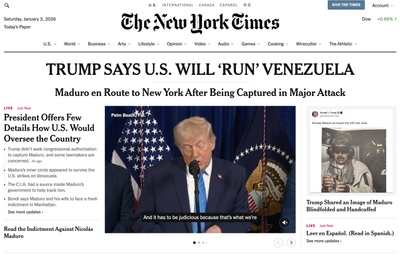The most important line in any headset review
Riley Hill: I Bought A Vision Pro After Everyone Said It Was Dead
After about two weeks of using the Vision Pro,
Riley has some interesting thoughts about using the Vision Pro for the first time many months after the hype cycle has cooled off considerably. It’s a really good post and he’s pretty positive on it, and I respect that, although I quoted the above line because it’s the most important factor in any VR headset review: how long have you had it?
As I’ve said many times, the first few weeks with a new headset are always magical. The novelty is still there and you’re experiencing things you’ve never experienced before. It’s new! It’s exciting! But as with all novelties, it wears off. With products, that means you’re left with how practical the thing is to use regularly. What a lot of people found out after more than a few weeks was that actually it was too much of a pain to use the Vision Pro for much at all once the novelty of floating windows wore off.
I’m not saying that Riley is wrong to enjoy the product, and maybe he’ll stay high on it for the long run, but I’m just saying the least surprising thing in the world of VR headset reviews is for someone to say “this is great!” a couple weeks into owning the thing. I’ve subscribed to his blog and will be very interested to see if the high remains in a few months.
The most productive use I currently have for the Vision Pro is writing. The tools I’ve been using are a TestFlight version of Ulysses (which looks like its removing visionOS support 😔)
One of the killer things for me with the Vision Pro right now is how few developers seem to care at all about it. I’m not even talking about ground-up rewrites for visionOS, I’m talking about even checking a single box in Apple’s developer portal to make your iPad app available for Vision Pro users. Outside of some media apps, basically nothing I use to do my work has made a visionOS app, and shockingly few have enabled their iPad apps to be used on the platform as well. And as he mentions, Ulysses (which I’m writing this very post in on my iPad) enabled visionOS usage in a TestFlight and seems to have removed that feature going forward, so I can’t even write in the headset anymore if I wanted to.
It’s all very frustrating, and in my experience over the past 8 months is the sort of paper cut that adds up to people getting frustrated with the platform.
I’m a post-pc guy. I’m looking for experiences and ways of doing things that move us beyond the traditional mouse/keyboard interface. I continue to believe that there’s a better and easier way for people to use computers and be productive. There are too many smart people in this field for us to be stuck with this paradigm from the 1970s.
On the one hand, I get it, but on the other hand I think it’s notable how resilient the mouse and keyboard as inputs have been over the 50+ years they’ve been around. Even “post-PC” devices struggle to differentiate themselves from this paradigm. The iPad in recent years has gotten mouse cursor support, traditional PC-style windowing, and the best model is now advertised in a laptop form factor most of the time. The Vision Pro is best used with a mouse/trackpad and keyboard attached and the killer feature for many people is the ability to display their Mac as a giant virtual display.
This isn’t to say we’ll never have innovation again, and I think the smartphone is the best example of a “post-PC” success story, but I think we should look at input methods that have been around for 50+ years with no sign of slowing down and think, “wow, these are remarkable for having such staying power, what makes them so compelling?” rather than, “these are so old and clearly we’re stuck, they must be replaced.”
